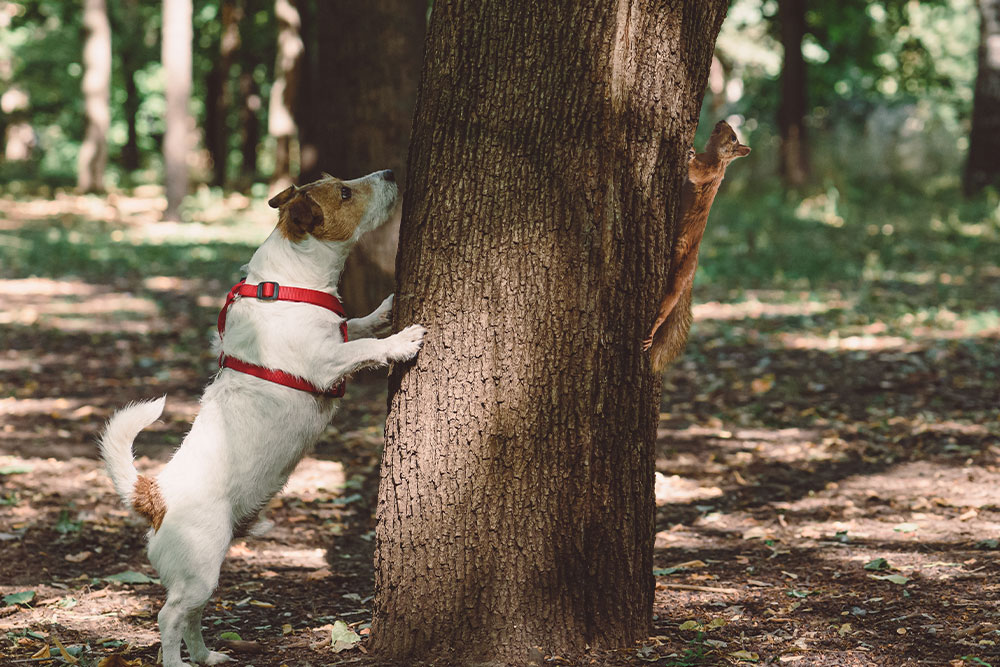Dogs have been by our side for thousands of years, evolving from wild wolves into the loyal companions we know today. As dog owners, we often marvel at their quirks, behaviors, and incredible abilities, but there’s always more to learn about these amazing animals. Whether you’re a lifelong dog lover or just curious, here are some fascinating facts about dogs that might surprise you!
Dogs Are Incredibly Loyal
We often hear stories of dogs waiting at doors, following their owners for miles, or standing guard in times of need. This fierce loyalty stems from thousands of years of domestication, blending with their natural pack instincts. To a dog, their human family is part of their “pack,” which is why they are always eager to protect, comfort, and spend time with us. Dogs’ ability to form deep emotional bonds is what makes them such cherished members of our families.
A Dog’s Sense of Smell is 40 Times More Powerful Than Ours
Imagine being able to detect scents from miles away or pick up the faintest trace of something on the breeze. That’s the world dogs live in, thanks to their extraordinary sense of smell. With around 300 million olfactory receptors in their noses (compared to our modest 5 million), dogs can detect scents up to 40 times better than humans. This super-sense allows them to do everything from helping in search-and-rescue operations to identifying medical conditions like cancer and diabetes in humans. Next time your dog sniffs the air, remember that they’re experiencing the world in a way we can only dream of!
Dogs Communicate Through Body Language
Dogs may not speak our language, but they have their own rich vocabulary of body language that communicates how they feel. While barking is their most obvious form of communication, their tails, ears, and posture tell an even bigger story. A wagging tail can mean a lot of things—a high, fast wag often signals excitement, while a slow wag with a low tail can indicate uncertainty. Watch your dog’s ears, too! Ears perked forward usually mean they’re curious or alert, while pinned-back ears could suggest they’re feeling anxious. Understanding these cues can help you respond better to your dog’s needs and emotions.
Different Breeds Have Unique Traits
Did you know that dog breeds were originally developed with specific jobs in mind? Over centuries, humans selectively bred dogs for tasks like herding, guarding, hunting, and retrieving. For example, Border Collies, known for their intelligence, are expert herders, while Labrador Retrievers have a natural love for swimming and retrieving. These breed-specific traits shape not only how dogs work but also how they interact with their environment. While all dogs are individuals with their own personalities, understanding your dog’s breed can offer insights into their behavior and preferences.
Dogs Can Experience Emotions Similar to Humans
Your dog’s ability to sense when you’re happy, sad, or stressed isn’t just your imagination. Research suggests that dogs can feel a range of emotions similar to humans, including joy, sadness, jealousy, and even empathy. They are masters at picking up on our emotions through subtle changes in body language, tone of voice, and behavior. If you’ve ever felt like your dog comforted you during a tough day, you’re probably right! Dogs often respond to their owners’ feelings, offering a cuddle or nudge when they sense you need it most.
Dogs Have Dream Cycles, Just Like Humans

If you’ve ever caught your dog twitching, barking softly, or even “running” while asleep, you’re witnessing a dream in progress! Like humans, dogs go through different sleep cycles, including REM (rapid eye movement) sleep—the stage where most dreaming occurs. Studies suggest that dogs dream about their daily activities, just like we do. So when your pup’s paws are moving while they sleep, they might be chasing that tennis ball from earlier in the day or exploring their favorite park.
Your Dog’s Health and Happiness Matter
Beyond their unique abilities and emotional intelligence, dogs rely on us to care for their health and well-being. From proper nutrition to mental stimulation and regular vet visits, keeping our dogs healthy is key to ensuring they live long, happy lives. Taking the time to understand their physical and emotional needs strengthens the bond we share with our dogs. Whether it’s providing regular exercise, mental enrichment, or just spending quality time together, our care is essential to their well-being.
So, the next time your dog offers you that loyal gaze, wags their tail, or snuggles up for a nap, take a moment to appreciate how truly remarkable they are. These loyal companions have been by our side for millennia, and they continue to enrich our lives in ways both big and small. Dogs are more than just pets—they are family, and the bond we share with them is something truly special.








Leave A Comment